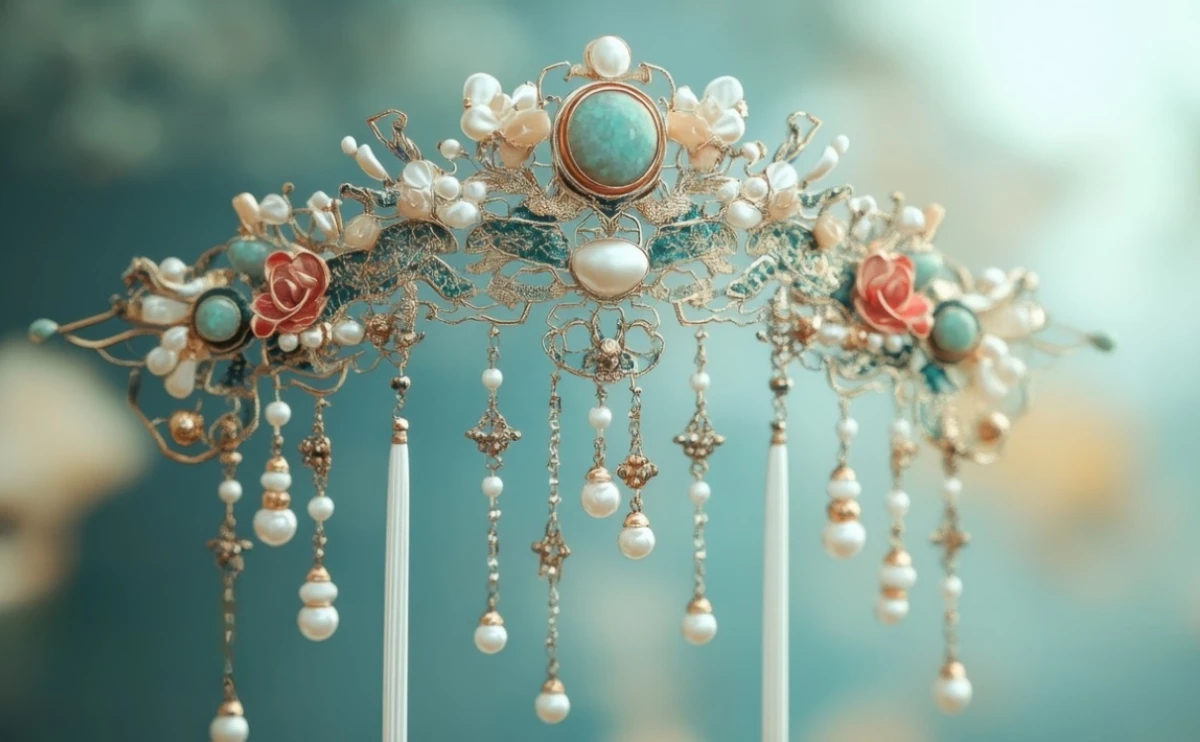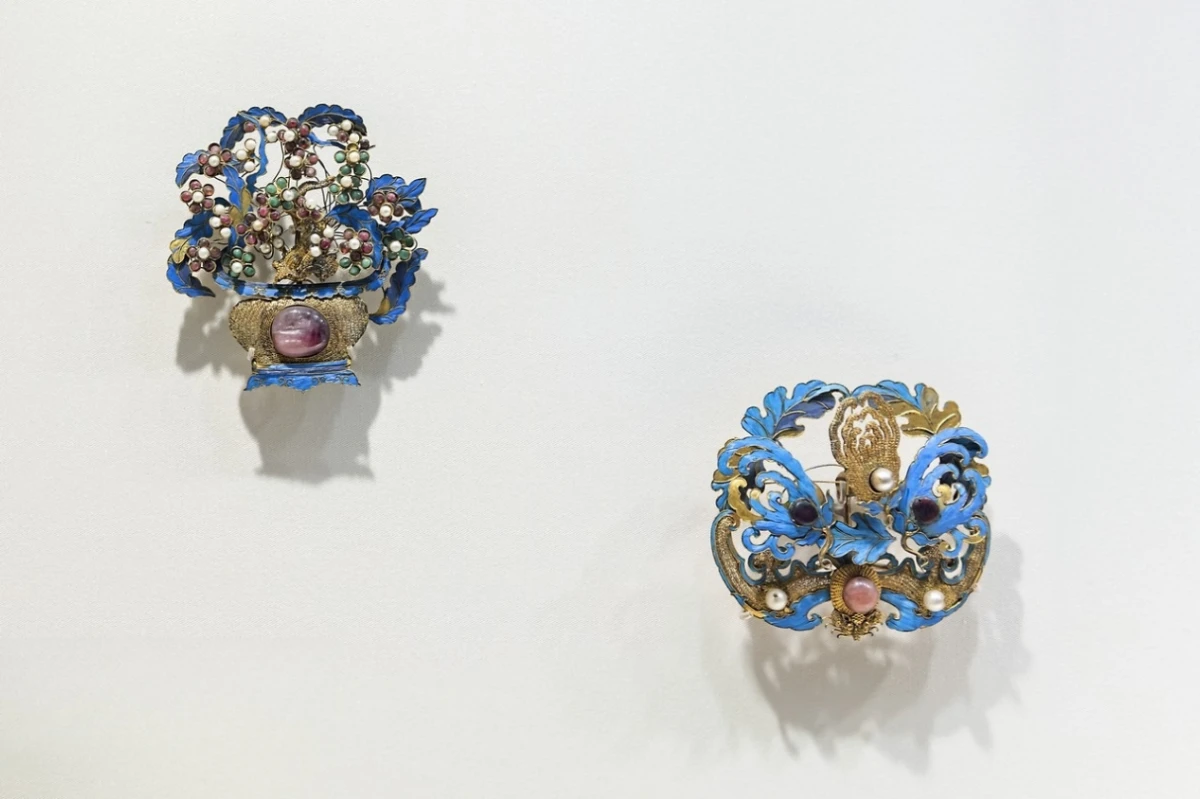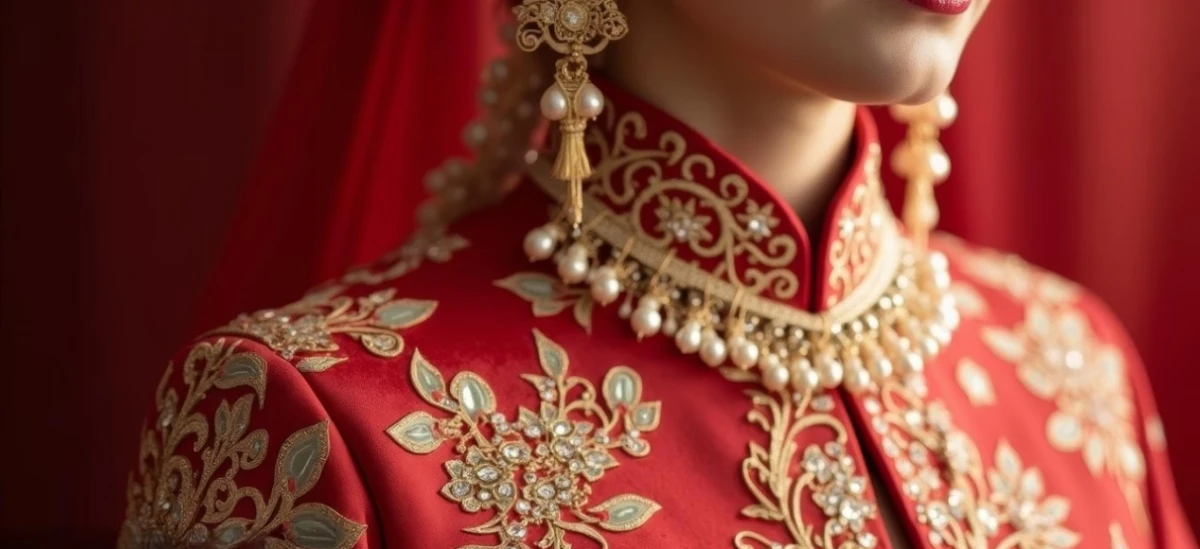Blog
Pearls in Chinese Culture: Celestial Treasures Woven with Timeless Symbolism

In the annals of Chinese civilization, pearls have transcended their organic origins to become celestial emblems of wisdom, power, and spiritual transcendence. For over 4,000 years, these “tears of the moon” have shaped dynastic rituals, poetic expression, and philosophical thought, offering Western audiences a window into China’s soul.
I. Celestial Origins: Pearls as Divine Gifts
In the Shang Dynasty (1600–1046 BCE), pearls were already documented in The Book of Documents as tributes from southern rivers, revered as gifts from the Dragon King—a celestial guardian of water and wisdom.
By the Han Dynasty (206 BCE–220 CE), they adorned imperial robes, symbolizing the emperor’s divine right to rule. The Book of Songs poetically describes pearls as “the dewdrops of immortality,” believed to crystallize the essence of yin and yang.
Legends tell of Pearl Queens who cultivated pearls in lunar ponds, their luminosity said to mirror the Milky Way. The Ming Dynasty scholar Wang Shizhen wrote: “A single pearl holds the harmony of heaven and earth”—a metaphor for cosmic balance that still resonates in feng shui practices today.

II. The Language of Pearls: Symbolism in Action
Wisdom & Virtue
Confucian texts liken pearls to the “untainted heart,” their flawless surfaces embodying moral purity. Scholars wore pearl-inlaid inkstones to signify intellectual clarity, while the phrase “pearl-like integrity” became a benchmark for leadership.
Feminine Elegance
In The Romance of the Western Chamber, the heroine Xixiang is crowned with pearls to signify her virtue. Brides traditionally received nine-strand pearl necklaces—nine being the auspicious number of eternity—to bless marriages with harmony.

Healing & Protection
Taoist alchemists ground pearls into elixirs to “purify the spirit,” while Ming physicians prescribed pearl powder for eye ailments and anxiety. The Compendium of Materia Medica records: “Pearls calm the storm within”—a belief preserved in modern wellness rituals.
III. Pearls in Power & Ritual
- Imperial Regalia: The Qing Dynasty imperial seal featured a 108-grain South Sea pearl, said to contain the “breath of dragons.” Emperors drank pearl-infused wine during lunar eclipses to commune with celestial forces.
- Buddhist Iconography: Pearls adorn the Thousand-Hand Guanyin, each pearl representing a vow to alleviate suffering. Monks still use pearl powder in incense for meditation.
- Diplomatic Gifts: During the Tang Dynasty, envoys carried pearl-encrusted mirrors as symbols of trust. Marco Polo marveled at how Chinese nobles “traded mountains of silver for a single perfect pearl”.
IV. Modern Resonance: Tradition Reimagined
Contemporary Chinese designers reinterpret pearls through a fusion of old and new:
- Hainanese Artistry: Li ethnic artisans weave pearls into dragon-scale motifs, echoing ancient Miao brocade patterns—a nod to the island’s maritime heritage.
- Tech-Enhanced Elegance: Lab-grown pearls now mimic the iridescence of Dahomey donut pearls—once reserved for Ming concubines—making celestial beauty accessible.
- Global Narratives: Brands like Mikimoto collaborate with Chinese calligraphers, etching poems onto pearl strands—a dialogue between Tang poetry and Japanese akoya mastery.
V. Why Pearls Matter Today
In an era of fast fashion, pearls remind us of slow beauty—each irregularity a testament to nature’s artistry. Western collectors now prize Chinese baroque pearls not just for their uniqueness, but for the stories they carry:
- A Ming-era hairpin sold at Christie’s in 2023 for $1.2M, its pearls still gleaming with the luster of the South China Sea.
- Feng shui masters recommend placing pearls in north-facing rooms to attract wealth—a practice rooted in the pearl’s association with water energy.
Conclusion: Pearls as Cultural Bridges
From the Terracotta Warrior’s pearl-embellished armor to Beyoncé’s modern pearl chokers, these organic gems have weathered empires and revolutions. For Western audiences, understanding pearl symbolism offers more than aesthetic appreciation—it’s an invitation to decode China’s philosophical lexicon, where every curve and iridescence whispers: “Beauty is eternal; wisdom is timeless.”
“In the West, diamonds proclaim fortune; in China, pearls whisper eternity.” — Adapted from The Art of Chinese Gemology (17th c.)
